“Fresh words could help us arrive at fresh ideas, for there is an intimate connection between thought and word. Careful use of words requires careful thinking.”
Don't wanna be here? Send us removal request.
Text

🎉 Sustainable Design Certificate, Biomimicry, MCAD 2025. 🎉
1 note
·
View note
Text

A Framework of Principles and Indicators Map, Jasmine Hoerter, MCAD 2024.
#sustainable design#mcad#future thinking#accountability#mapping#principles#regenerative future#creative thinking
0 notes
Text

Contextualized Map, Jasmine Hoerter, MCAD 2024.
#health and safety#environmental mapping#environment#pollution#cause and effect#mcad#sustainability#sustainable systems
0 notes
Text

Critical Systems Boundary Critique Map, Jasmine Hoerter, MCAD 2024.
#critical systems#boundary critique#creative thinking#sustainable design#sustainability#sustainable systems#mcad#mapping
0 notes
Text

Ecocycle Mapping, Jasmine Hoerter, MCAD 2024.
0 notes
Text

Influence Mapping, Jasmine Hoerter, MCAD 2024.
#land use#species#mapping#creative thinking#mcad#sustainable design#sustainability#sustainableliving
0 notes
Text

Situational Complexities Mapping, Jasmine Hoerter, MCAD 2024.
#problem solving#creative thinking#mcad#sustainable systems#sustainability#sustainable design#mapping#situational complexities
0 notes
Text

Analog Mapping, Jasmine Hoerter, MCAD 2024.
#learning#creativity#creative thinking#mcad#sustainable design#sustainable systems#mapping#analogy map
0 notes
Text

Sustainable Visioning Map, Jasmine Hoerter, MCAD 2024.
0 notes
Text

Systemic Social Change Map, Jasmine Hoerter, MCAD 2024.
0 notes
Text
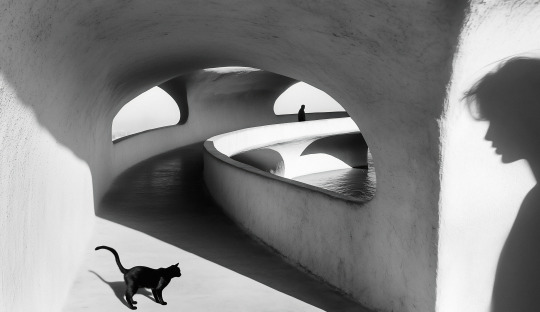
The Black Cat
A suggestive image that blends architecture and urban life: in a play of light and shadows, a black cat walks along a winding corridor while in the background a solitary figure gazes at the horizon, creating an atmosphere of mystery and contemplation.
13 notes
·
View notes
Text

From "suspension" series- Water Lilies
In a water mirror, the voices of the water lilies rise, suspended, toward a pale sky. The slender stems, solitary yet interconnected, seem to weave a tapestry of whispered thoughts, while the gaze gets lost in the breath of a vanishing horizon. Here, time dissolves into a whisper of mist.
in uno specchio d'acqua le voci delle ninfee si ergono, sospese, verso un pallido cielo. Gli steli sottili, solitari ma interconnessi, sembrano tessere una trama di pensieri sussurrati, mentre lo sguardo si smarrisce nel respiro di un orizzonte evanescente. Qui, il tempo si dissolve in un sussurro di nebbia.
14 notes
·
View notes
Text




Building Leaders of Tomorrow: Shaping a Global Future, Art Curriculum, MCAD 2024.
0 notes
Text
Cultivating Tomorrow’s Leaders Through Creative Leadership
Why Creative Leadership Matters In a world of growing complexity, the need for bold, innovative leaders has never been more urgent. Faced with pressing issues like climate change, social inequality and global unrest, we find ourselves yearning for a new kind of leadership that blends creativity, sustainability and ethical responsibility. The Building Leaders of Tomorrow: Shaping a Global Future project proposes a groundbreaking approach to leadership education. Centered in the Czech Republic, this initiative aspires to educate and ultimately inspire the next generation of changemakers. What is Creative Leadership? Creative leadership is more than a concept; it is a heartfelt commitment to merging imagination with empathy and action to ignite meaningful change in our communities. Unlike traditional leadership styles, creative leadership thrives on flexibility, collaboration and the courage to navigate uncertainty. Creative leaders foster cultures of curiosity and experimentation, empowering them to break free from limiting paradigms and co-create solutions that address today’s multifaceted challenges. Empowering Young Leaders Through Education The core of the project is a profound vision for transforming education in international classrooms across Prague. The mission is to build a classroom experience where students are encouraged to think beyond the confines of traditional teaching and instead embrace exploration, critical thinking and community engagement. We want to set the stage for a classroom experience that ignites passion and purpose. Imagine children aged 7 to 15 diving into hands-on leadership workshops, tackling real-world challenges and participating in community service projects that extend across the EU. For example, participants will engage in community service projects in Germany, Slovakia, Poland and more. This allows our young leaders to apply their newfound knowledge and skills while making a tangible impact on the spaces around them. Creative Leadership Curriculum in Action The Building Leaders of Tomorrow project weaves together four pillars of creative leadership—creativity, culture, equity and sustainability: Creativity: Interactive workshops and artistic exploration unlock children’s imaginative potential, empowering them to transform abstract ideas into actionable solutions. Culture: With diverse guest speakers and mentors, students are inspired to embrace inclusivity, blending wisdom from modern and Indigenous leadership styles that celebrate our rich tapestry of humanity. Equity: By fostering empathy and collaboration, the program empowers students to lead with care, courageously addressing disparities in their communities. Sustainability: Armed with knowledge of systems and futures thinking, students learn to anticipate and address the complex environmental and social challenges that lie ahead. Core Components:
Leadership Workshops: Objective: Equip students with fundamental creative leadership skills through hands-on, experiential learning. Activities: Role-playing scenarios, group discussions, art-infused problem-solving tasks and outdoor team-building exercises. Key Focus Areas: - Self-awareness and ethical leadership - Effective communication and collaboration - Adaptive thinking and goal-setting
Cultural Enrichment: Objective: Expand students' understanding of diverse cultural leadership practices and foster empathy. Activities: Guest presentations by community leaders and cultural experts, exploration of global and Indigenous leadership models. Outcomes: Enhanced respect for cultural diversity and global-mindedness.
Sustainability & Innovation: Objective: Instill sustainability-focused problem-solving by engaging students in projects addressing environmental and social issues. Activities: Practical projects on recycling, conservation and community-driven social entrepreneurship. Competencies Developed: Systems-thinking and futures-thinking for sustainable solutions.
Mentoring Program: Objective: Provide individualized guidance to reinforce learning and personal growth. Structure: Pair students with experienced mentors who exemplify ethical and sustainable leadership. Benefits: Exposure to resilience-building and self-care practices.
Community Engagement Projects: Objective: Encourage direct application of leadership skills through impactful, hands-on community service. Examples: Leading local clean-up drives, planning educational nature activities or facilitating sustainability events. Reflection Process: Students document their experiences and assess their contributions and learning.
Reflection & Progress Tracking: Objective: Foster self-awareness and continuous improvement. Method: Guided reflection sessions, feedback loops and peer discussions. Outcome: Build adaptability, self-regulation and confidence.
Ethical Leadership for a Global Future Central to creative leadership is a commitment to ethics. This initiative deepens our young leaders' sense of responsibility, encouraging them to lead with integrity and compassion. By engaging in mentorship and community projects, students confront real-world ethical dilemmas, from environmental stewardship to social justice. Picture a student-led initiative that designs a recycling program for their school or partners with local organizations to support struggling families or one that highlights the importance of biodiversity through a field study of a local forest. These hands-on experiences not only strengthen their decision-making skills but also nurture a profound dedication to the well-being of society. Pioneering a Sustainable Future The potential impact of the Building Leaders of Tomorrow project is boundless. Consider the journey of a student who once lacked confidence but, through mentorship and collaborative endeavors, discovers their inner leader. By the end of the program, they emerge as empowered individuals, equipped with the ability to communicate, collaborate, and lead with purpose by the early age of 7. Creative leadership transcends the mere teaching of skills; it is about crafting environments where young hearts can flourish, take risks and redefine leadership for the 21st century. Let’s join hands in this transformative journey and shape a global future–one classroom at a time.
0 notes
Text
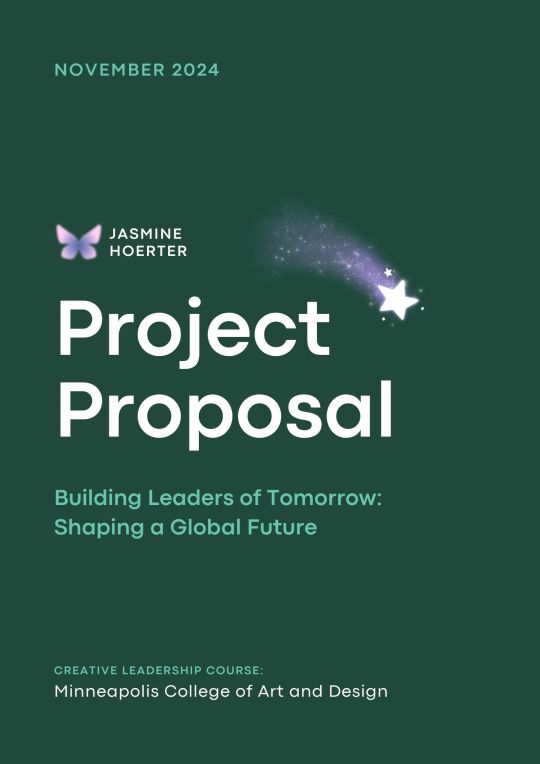
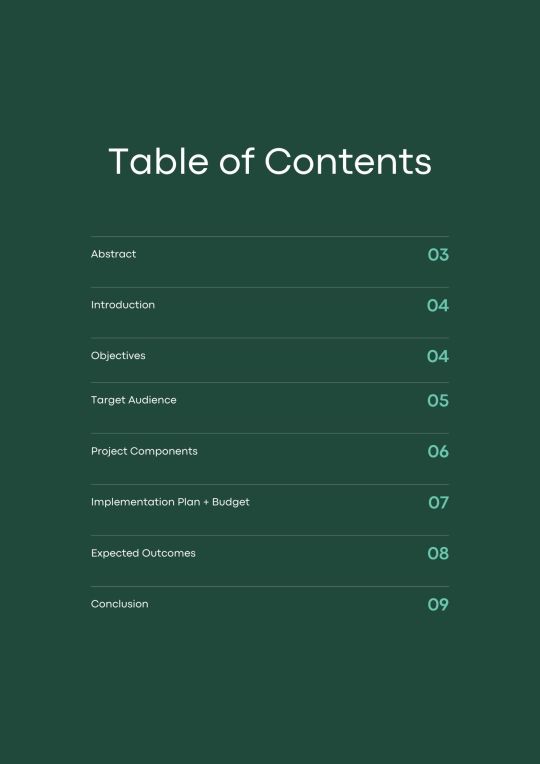
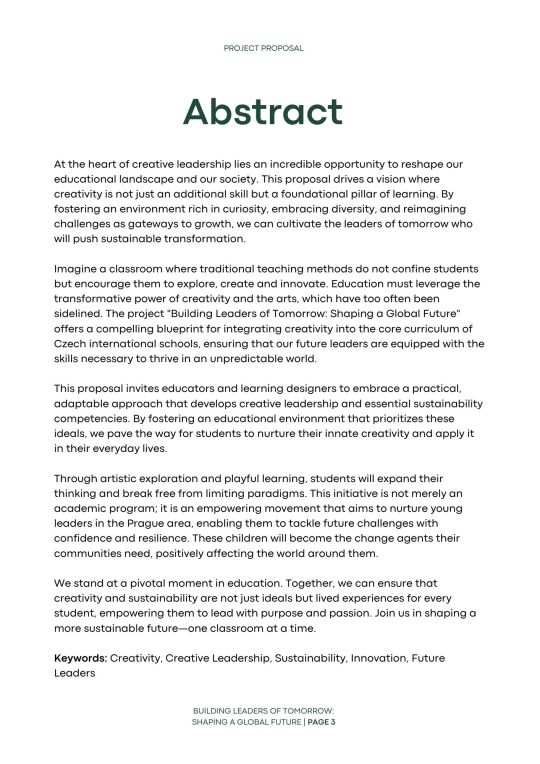
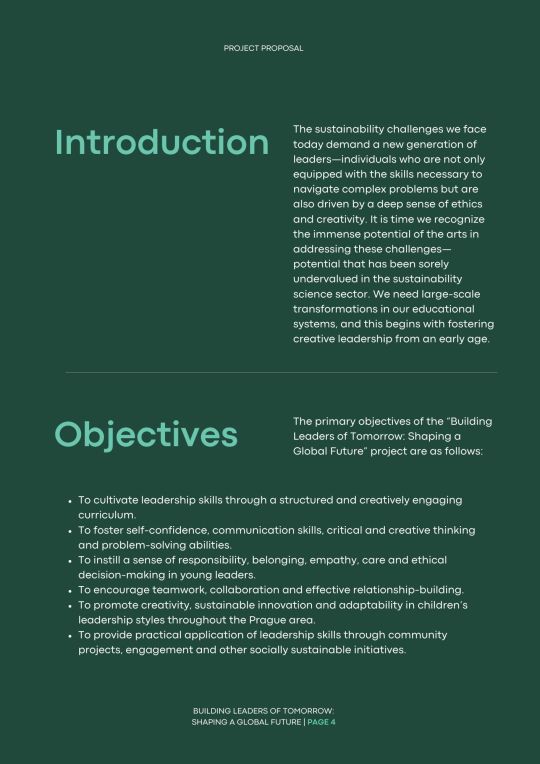
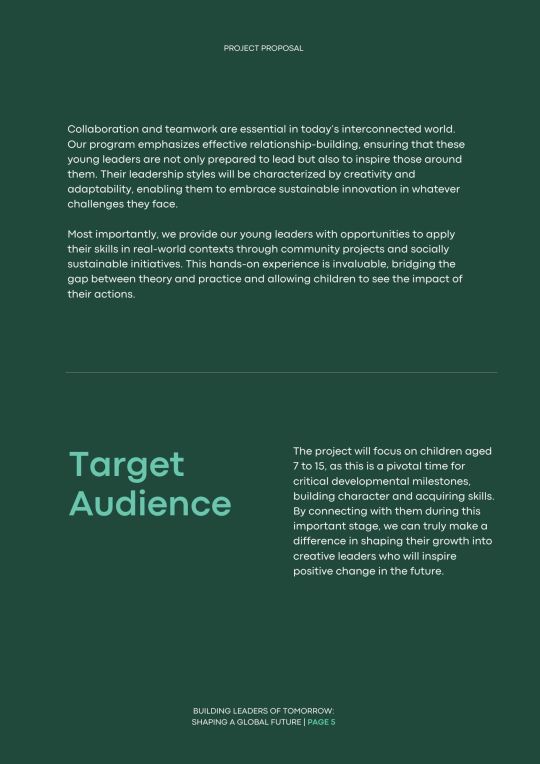

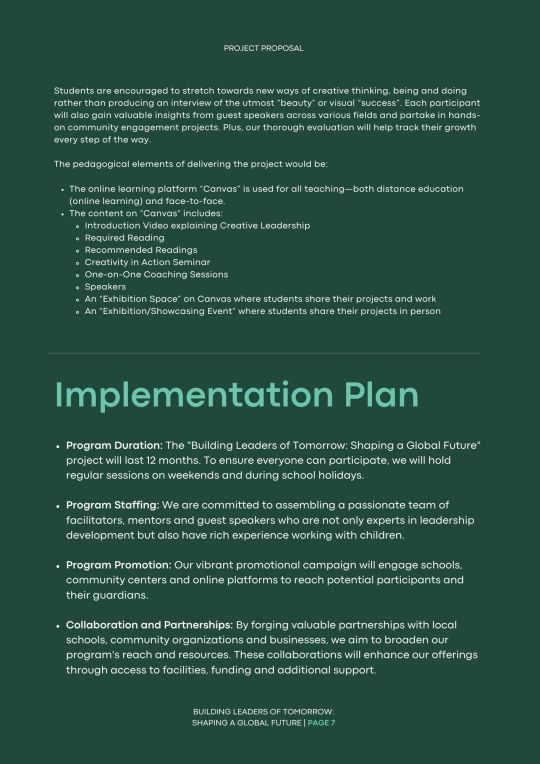
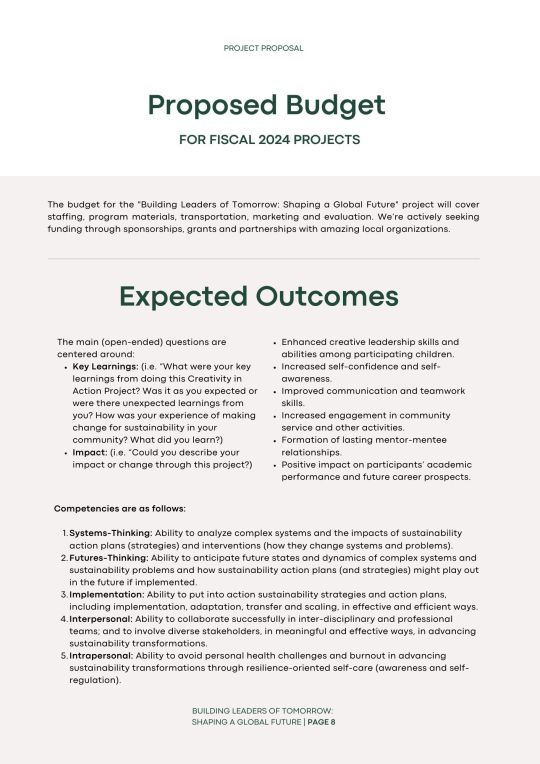

Building Leaders of Tomorrow: Shaping a Global Future, Creative Project Proposal, MCAD 2024.
1 note
·
View note
Text















Building Leaders of Tomorrow: Shaping a Global Future, Creative Project Presentation, MCAD 2024.
Presentation Link
0 notes
Text

Elements
A tale where each element plays its role in perfect balance.
25 notes
·
View notes